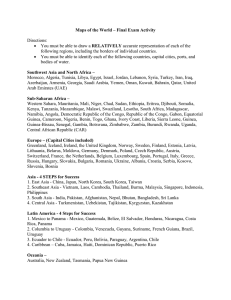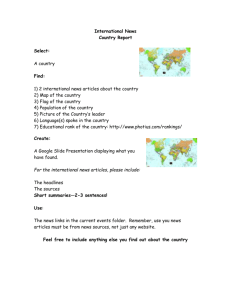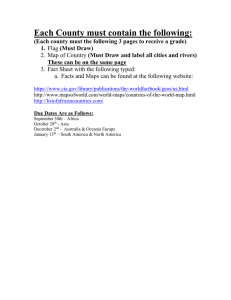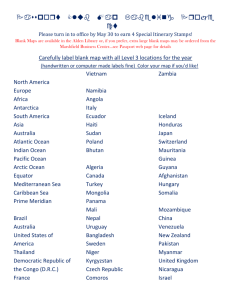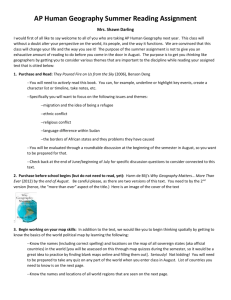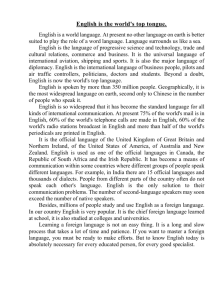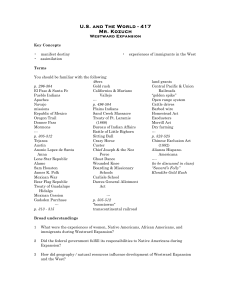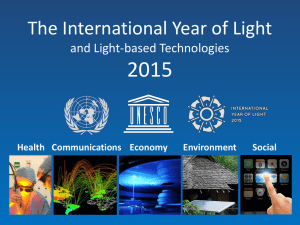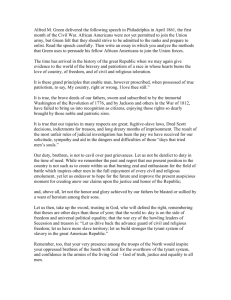EXPLANATORY NOTES
advertisement
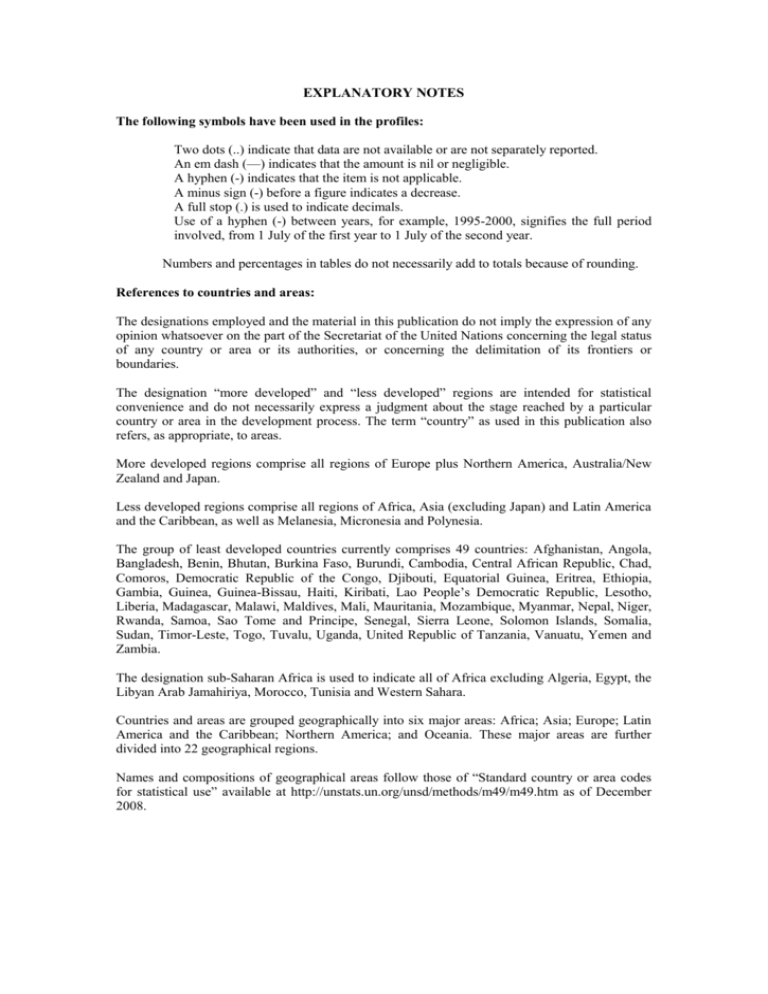
EXPLANATORY NOTES The following symbols have been used in the profiles: Two dots (..) indicate that data are not available or are not separately reported. An em dash (—) indicates that the amount is nil or negligible. A hyphen (-) indicates that the item is not applicable. A minus sign (-) before a figure indicates a decrease. A full stop (.) is used to indicate decimals. Use of a hyphen (-) between years, for example, 1995-2000, signifies the full period involved, from 1 July of the first year to 1 July of the second year. Numbers and percentages in tables do not necessarily add to totals because of rounding. References to countries and areas: The designations employed and the material in this publication do not imply the expression of any opinion whatsoever on the part of the Secretariat of the United Nations concerning the legal status of any country or area or its authorities, or concerning the delimitation of its frontiers or boundaries. The designation “more developed” and “less developed” regions are intended for statistical convenience and do not necessarily express a judgment about the stage reached by a particular country or area in the development process. The term “country” as used in this publication also refers, as appropriate, to areas. More developed regions comprise all regions of Europe plus Northern America, Australia/New Zealand and Japan. Less developed regions comprise all regions of Africa, Asia (excluding Japan) and Latin America and the Caribbean, as well as Melanesia, Micronesia and Polynesia. The group of least developed countries currently comprises 49 countries: Afghanistan, Angola, Bangladesh, Benin, Bhutan, Burkina Faso, Burundi, Cambodia, Central African Republic, Chad, Comoros, Democratic Republic of the Congo, Djibouti, Equatorial Guinea, Eritrea, Ethiopia, Gambia, Guinea, Guinea-Bissau, Haiti, Kiribati, Lao People’s Democratic Republic, Lesotho, Liberia, Madagascar, Malawi, Maldives, Mali, Mauritania, Mozambique, Myanmar, Nepal, Niger, Rwanda, Samoa, Sao Tome and Principe, Senegal, Sierra Leone, Solomon Islands, Somalia, Sudan, Timor-Leste, Togo, Tuvalu, Uganda, United Republic of Tanzania, Vanuatu, Yemen and Zambia. The designation sub-Saharan Africa is used to indicate all of Africa excluding Algeria, Egypt, the Libyan Arab Jamahiriya, Morocco, Tunisia and Western Sahara. Countries and areas are grouped geographically into six major areas: Africa; Asia; Europe; Latin America and the Caribbean; Northern America; and Oceania. These major areas are further divided into 22 geographical regions. Names and compositions of geographical areas follow those of “Standard country or area codes for statistical use” available at http://unstats.un.org/unsd/methods/m49/m49.htm as of December 2008.
